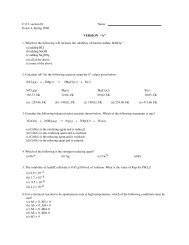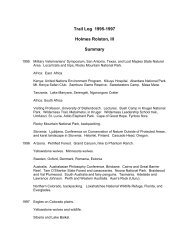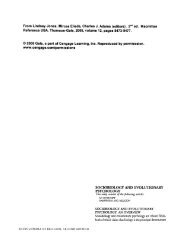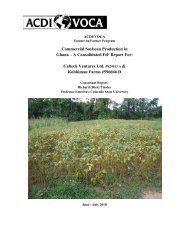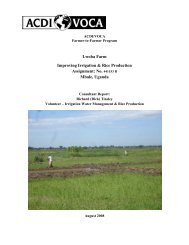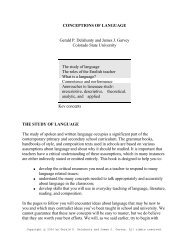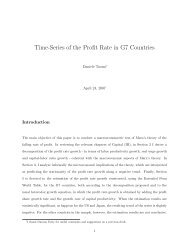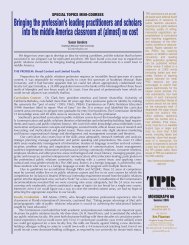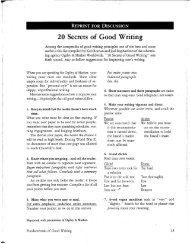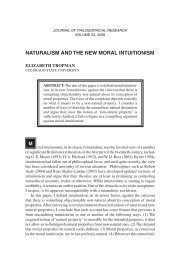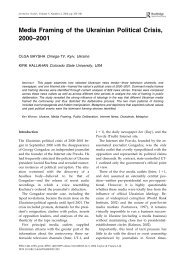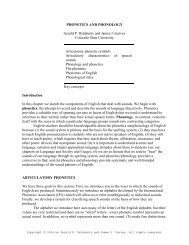Geha Foods Evaluation of Irrigation for Processed Tomatoes
Geha Foods Evaluation of Irrigation for Processed Tomatoes
Geha Foods Evaluation of Irrigation for Processed Tomatoes
You also want an ePaper? Increase the reach of your titles
YUMPU automatically turns print PDFs into web optimized ePapers that Google loves.
opportunity present itself to minimize any water stress. With irrigation the penalties <strong>for</strong><br />
under irrigating and stressing the crop are substantially greater then the penalties <strong>for</strong> over<br />
irrigating. Please don’t blame the farmers <strong>for</strong> logical choices with an unreliable delivery<br />
system.<br />
Water Charges: There is an ef<strong>for</strong>t to charge farmers <strong>for</strong> use <strong>of</strong> irrigation water. This is<br />
proclaimed as a volume charge but no water is actually measured. Instead it would be more<br />
accurately called an area by crop charge, and assumes the crop only receives the estimated<br />
water duty <strong>for</strong> that crop. Without actually measuring the water, an estimated volume charge<br />
is not effective in reducing excess water use, if that is part <strong>of</strong> the purpose. Trying to manage<br />
a true measured volume charge can tremendously increase the administrative cost and<br />
become a major financial burden to the farmers, particularly smallholders. However, in<br />
Tajikistan collections are difficult, and if you are making in<strong>for</strong>mal payments to secure water,<br />
you are reluctant to make <strong>for</strong>mal payments. Unless, <strong>of</strong> course, the opposite is happening, and<br />
the in<strong>for</strong>mal payment is in lieu <strong>of</strong> assessed charges. The end result is no funds <strong>for</strong> necessary<br />
maintenance work on the main diversion and canal system. Since the government appears to<br />
be making substantial pr<strong>of</strong>it from cotton sales, a portion <strong>of</strong> which represents a depressed farm<br />
gate cotton price, the depressed cotton prices could be viewed as a rural tax, and part <strong>of</strong> the<br />
revenue gained be allocated <strong>for</strong> irrigation infrastructure maintenance, and in reality this is a<br />
easy <strong>for</strong>m <strong>of</strong> taxation or water user fees to collect.<br />
Overview<br />
Improving <strong>Irrigation</strong> <strong>for</strong> Processing <strong>Tomatoes</strong>, etc.<br />
Be<strong>for</strong>e reviewing the different possibilities <strong>for</strong> improving the irrigation system <strong>for</strong> processed<br />
tomatoes in conjunction with other crops, it might be desirable to review a couple points in<br />
advance.<br />
Multiple Crops Involved: First, it appears the tomatoes will not be produced alone but most<br />
likely produced along side <strong>of</strong> Cotton, with most <strong>of</strong> the public sector support services focused<br />
on cotton. Tomato production could actually benefit from the excessive government emphasis<br />
on cotton with depressed returns, as inputs usually get favorable diverted from the less<br />
economic to the more economic crop. Thus any renovations to the irrigation system at the<br />
farm level will have to consider both crops and the probability <strong>of</strong> rotating between them, as<br />
well as other crops like winter wheat, potatoes, vegetables, etc. This rotation with other crops<br />
might be important in controlling some <strong>of</strong> the soil borne diseases <strong>of</strong> tomatoes such as late<br />
blight. Renovating the irrigation system <strong>for</strong> both tomatoes and cotton should not be a major<br />
problem as both are furrow irrigated with tomatoes usually grown on beds approximately<br />
twice the width <strong>of</strong> cotton furrows. Thus most likely it would be possible to grow cotton on<br />
tomato beds using two rows per bed instead <strong>of</strong> one.<br />
Evapotranspiration Energy: Also, the other problem is that the water requirements are<br />
reasonable similar <strong>for</strong> all crops during the balk <strong>of</strong> the growing season. This is because the<br />
water requirements <strong>of</strong> different crops are more an external climatic factor, than an individual<br />
plant factor. This is really basic physics as transpiration represents a change in state <strong>of</strong> water<br />
from the liquid to vapor state. This is referred to as the latent heat <strong>of</strong> evaporation and<br />
requires some 536 cal/cc <strong>of</strong> water. This energy is not available from within the plant. It<br />
really comes from direct solar radiation and consumes most <strong>of</strong> the solar radiation reaching the<br />
13



